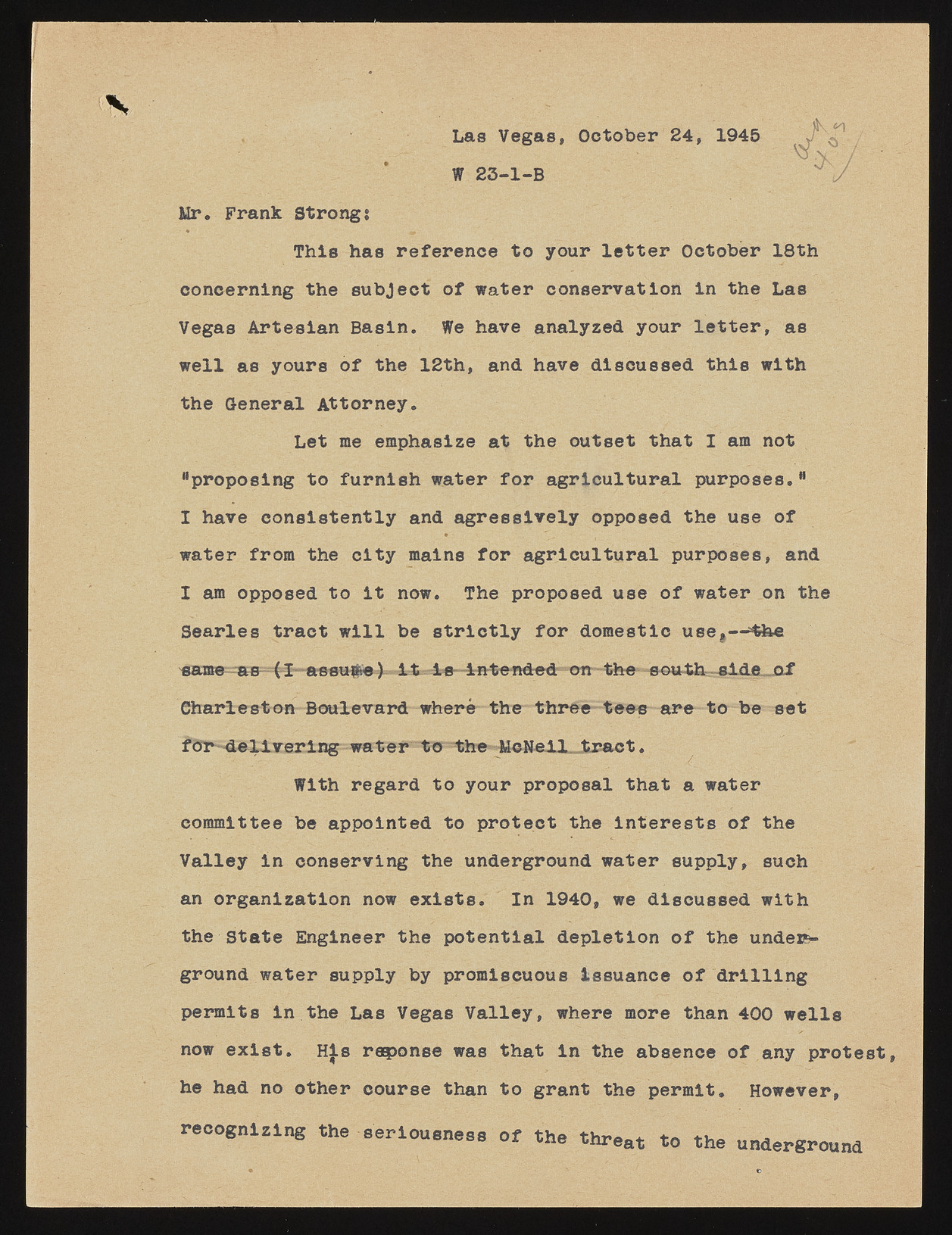Copyright & Fair-use Agreement
UNLV Special Collections provides copies of materials to facilitate private study, scholarship, or research. Material not in the public domain may be used according to fair use of copyrighted materials as defined by copyright law. Please cite us.
Please note that UNLV may not own the copyright to these materials and cannot provide permission to publish or distribute materials when UNLV is not the copyright holder. The user is solely responsible for determining the copyright status of materials and obtaining permission to use material from the copyright holder and for determining whether any permissions relating to any other rights are necessary for the intended use, and for obtaining all required permissions beyond that allowed by fair use.
Read more about our reproduction and use policy.
I agree.Information
Digital ID
Permalink
Details
Member of
More Info
Rights
Digital Provenance
Publisher
Transcription
Las Vegas, w October 24, 1945 . CV/ v / W 23-1-B ™ i v/. A f Mr. Frank Strong: This has reference to your letter October 18th concerning the subject of water conservation in the Las Vegas Artesian Basin. We have analyzed your letter, as well as yours of the 1 2 th, and have discussed this with the General Attorney. Let me emphasize at the outset that I am not “proposing to furnish water for agricultural purposes.“ I have consistently and agressively opposed the use of water from the city mains for agricultural purposes, and I am opposed to it now. The proposed use of water on the Searles tract will be strictly for domestic use9— “the i i H u i r u u ......( I a s s u f l l s ) i t l e — i n - t e n d e d a r t t h e e o u £ h - s ± d e ,j C L f Charleston Boulevard where the three-tees are to be set for ~de 11 vering water to the McNell_Jtract. With regard to your proposal that a water committee be appointed to protect the interests of the Valley in conserving the underground water supply, such an organization now exists. In 1940, we discussed with the State Engineer the potential depletion of the underground water supply by promiscuous issuance of drilling permits in the Las Vegas Valley, where more than 400 wells now exist. His response was that in the absence of any protest he had no other course than to grant the permit. However, recognizing the eerloueness of the threat to the underground

